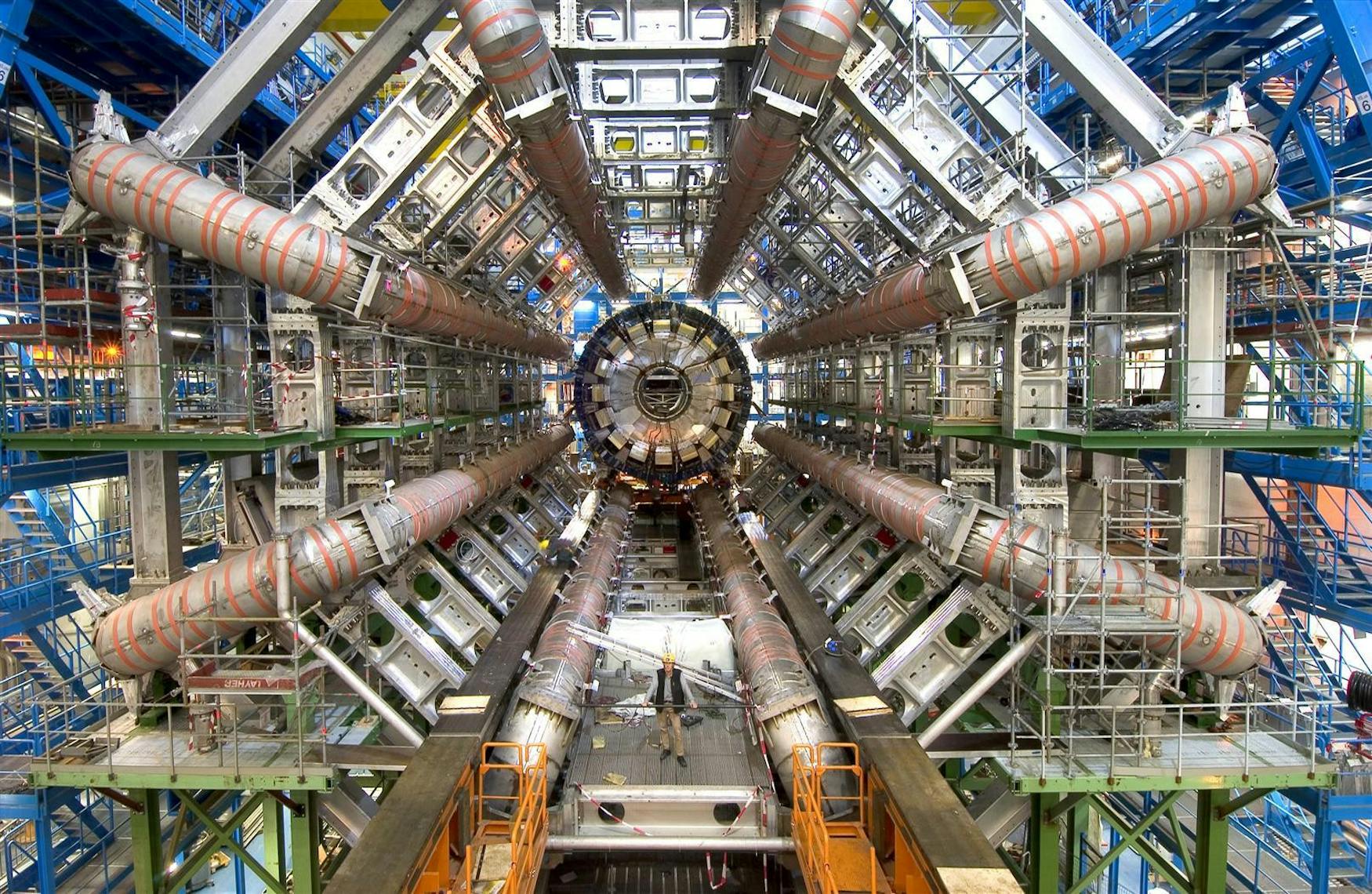Chasing Particles
A Brandeis student in the world's largest physics lab.
Ella Richards ’26, a physics and math major at the University, likes to think small. Richards spends her time at Brandeis thinking about subatomic particles. But her work isn’t happening in a typical on-campus lab. Instead, it connects Brandeis to the Large Hadron Collider at the European Organization for Particle Physics in Switzerland, home of the ATLAS experiment, one of the most ambitious physics projects in the world.
“I work in Gabriella Sciolla’s lab, which is part of the Brandeis ATLAS group in the physics department,” Richards explained in a Sept. 23 interview with The Justice. She began working in the lab after taking an introductory physics course. “I TA for the intro physics lab course, but I didn’t know a whole lot about the physics research going on at Brandeis,” she said. But when Prof. Gabriella Sciolla (PHYS) invited her to join the lab, Richards jumped at the chance.
At the heart of the ATLAS experiment is a colossal detector that observes collisions between protons accelerated nearly to the speed of light. These collisions create showers of particles, and the ATLAS detector is designed to track and measure them. The experiments take place in the LHC’s 27-kilometer underground ring, nearly the size of seven Central Parks end-to-end. “The goal of the detectors is to basically try to understand what’s going on in each of those interactions,” Richards said.
Her project focuses on the innermost component of the ATLAS detector, aptly named the inner detector, which tracks particles’ positions as they emerge from collisions. But the LHC is planning an upgrade around 2030 to increase the number of collisions that can happen. With more collisions comes more data. More background “noise” and higher radiation levels means the inner detector will need an upgrade as well. Enter the Inner Tracker, or ITK, a new system designed to handle these conditions.
At Brookhaven National Laboratory in New York, Richards spent her 2025 summer working directly on ITK hardware. “The research that I was doing this past summer involved testing the hardware for these components of the ITK,” she said.
The ITK is built from modules, small silicon sensors that detect charged particles, assembled onto larger structures called staves. “The staves that are going to be built into sort of a barrel shape and that’s the section of the ITK that we’re working on building,” Richards explained.
Her day-to-day work involved two main types of tests: noise testing and IV scans. Noise testing ensures that each of the module’s 1,280 channels records particle hits accurately, without excessive interference. IV scans measure the breakdown voltage of the silicon sensor, verifying that it can handle the high voltages required without failing. Some tests include thermal cycling, repeatedly switching between room temperature and minus-40 degrees Celsius to simulate extreme operating conditions.
Since the ATLAS upgrade is still in production mode, Richard’s work was less focused on discovering new physics and more on making sure the hardware functions reliably. “The project … was a little bit less like asking your research question, like finding out some definitive answer. My day-to-day was testing modules,” she said.
Even with her focus on hardware, Richards has a deep understanding of the physics these components enable. Each particle collision generates an enormous amount of data. The inner detector collects position data for charged particles, while outer layers record energy deposited by particles.
“For the tracking detector, it can specifically only detect charged particles and you can reconstruct information about the particles’ momentum,” Richards explained. The data flows through a multi-level trigger system, filtering events to determine which are interesting enough to save for detailed analysis.
The physics itself aims to test and extend the Standard Model, one of the most successful theoretical frameworks in science that describes fundamental particles and their interactions. “They’re trying to probe areas where there might be new physics with theorists and experiments verifying what we see,” Richards explained.
Brandeis is one of many institutions collaborating on ATLAS, with researchers spread across roughly 180 institutions worldwide. At BNL, graduate students and undergraduates from Brandeis join international teams in assembling and testing components, which are later shipped to CERN for final installation.
Although much of her work this year will shift toward data analysis, Richard’s summer experience at BNL gave her hands-on exposure to the physical systems underlying every particle measurement. “Last year was mostly like learning about detector systems,” she said. Now, with a foundation in hardware, she can begin tackling analysis tasks that interpret the vast quantities of data produced by the ATLAS detector.
The project is massive and a marathon. Each LHC run spans years of operation, collecting more data with each iteration. Run three is expected to conclude in the summer of 2026, followed by the high-luminosity upgrade, which will require new inner tracker components, upgraded trigger systems and enhanced data-processing capabilities.
Richards’ path into particle physics wasn’t entirely self-directed — she stumbled into the opportunity through teaching — but she’s found it captivating. “Of the stuff that we have going on here, I’m way more interested in particle physics. That’s probably what I’m going to want to do if I apply to grad school,” she said.
From silicon modules at BNL to particle collisions in Switzerland, Richards’ summer work offers a glimpse into the enormous collaborative effort that goes into studying the fundamental building blocks of matter. Each module tested, each stave assembled and each voltage measured contributes to a global endeavor that stretches from Massachusetts to the Swiss-French border. And while Richards may not yet be analyzing the Higgs boson directly yet, her efforts play a small but integral part in ensuring the inner tracker’s reliability which, with some luck, play a part in our continued progress.



Please note All comments are eligible for publication in The Justice.